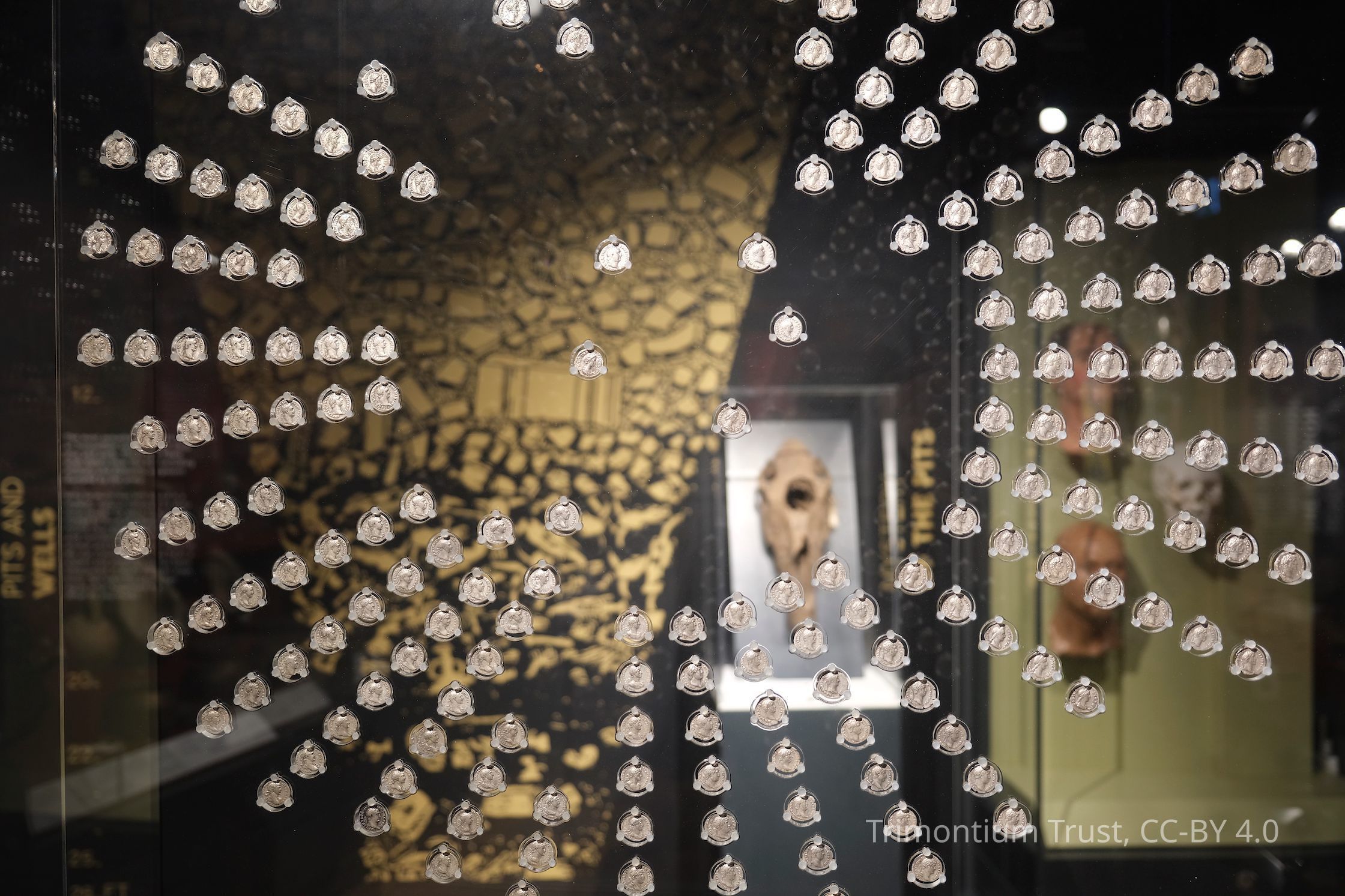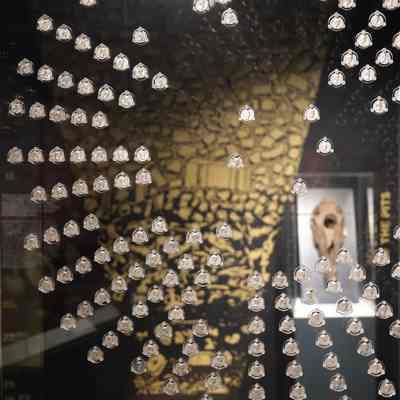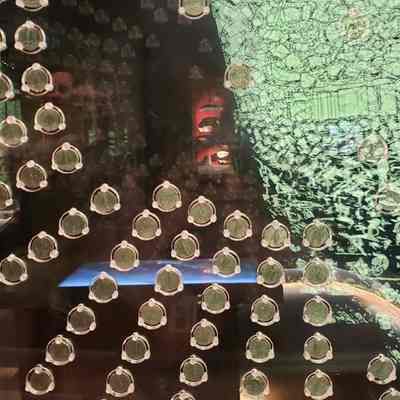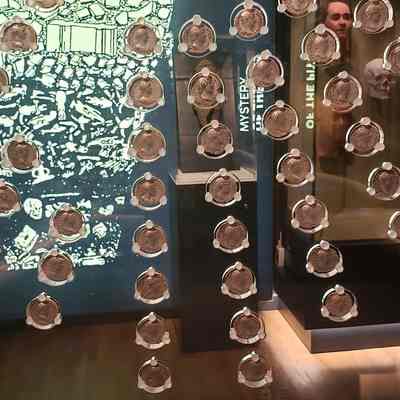Label Type
Exhibition CaptionLabel
These coins were found in 2011 by metal detectorist, Jim Middleton, on Synton Hill near Ashkirk, by Selkirk. The 228 silver denarii, dating from the 1st to 2nd century AD, depict Roman Emperors from Vespasian to Commodus, as well as their wives and children.
Jim Middleton said: "At first glance they looked nothing special - encrusted with dirt, some stuck together and all the coins discoloured and green with oxidation. However, I thought they might include something interesting, so I gathered them all up for safekeeping in a takeaway tub while I sought further advice. They turned out to be extremely important and the rest, as they say, is history!"
The Treasure Trove panel awarded the coins jointly to the Trimontium Trust and Scottish Borders Council who, between them, raised the money to clean and display the coins.Label Type
Exhibition CaptionLabel
Life After the Fort
The fort was finally abandoned and destroyed by fire around AD 180, possibly during a major rebellion. The army however, continued to have a presence, patrolling the area from Hadrian's Wall. The ruins of Trimontium also acted as a valuable staging post for many future Roman invasions.
Hoards of coins, often in leather pouches, have been found in the south of Scotland from the decades after Newstead was abandoned. They were probably given to powerful local leaders as a way of keeping the peace.
These hoarded coins were not used as currency. They seem to have been hidden for safekeeping or buried as offerings to the gods to ensure the protection of people in their settlements.


